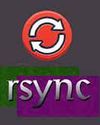
AI technology is changing the way the world does business. Generative artificial intelligence (generative AI) refers to the use of large language models (LLMs) to create new content, like text, images, music, audio, and videos.
LLMs are generative AI models that use deep learning techniques known as transformers. These models excel at natural language processing (NLP) tasks, including language translation, text classification, sentiment analysis, text generation, and question-answering. LLMs are trained with vast data sets from various sources, sometimes boasting hundreds of billions of parameters. They could fundamentally transform how we handle, interact with and master data.
Prominent examples of large language models include OpenAI’s GPT3, Google’s BERT, and XLNet, based on a whopping 175 billion parameters.
Industry adoption of large language models
Generative AI is primed to make an increasingly strong impact on enterprises over the next five years.
The generative AI-based LLMs market is poised for remarkable growth, with estimations pointing towards a staggering valuation of $188.62 billion by the year 2032. - Brainy Insights
The world’s total stock of usable text data is between 4.6 trillion and 17.2 trillion tokens. This includes all the world’s books, all scientific papers, all news articles, all of Wikipedia, all publicly available code, and much of the rest of the internet, filtered for quality (e.g., web pages, blogs, social media). Recent estimates place the total figure at 3.2 trillion tokens. One of today’s leading LLMs was trained on 1.4 trillion tokens. – Forbes
هذه القصة مأخوذة من طبعة December 2023 من Open Source For You.
ابدأ النسخة التجريبية المجانية من Magzter GOLD لمدة 7 أيام للوصول إلى آلاف القصص المتميزة المنسقة وأكثر من 9,000 مجلة وصحيفة.
بالفعل مشترك ? تسجيل الدخول
هذه القصة مأخوذة من طبعة December 2023 من Open Source For You.
ابدأ النسخة التجريبية المجانية من Magzter GOLD لمدة 7 أيام للوصول إلى آلاف القصص المتميزة المنسقة وأكثر من 9,000 مجلة وصحيفة.
بالفعل مشترك? تسجيل الدخول

Red Hat unveils Red Hat OpenShift Virtualization Engine
Red Hat OpenShift Virtualization Engine is a new edition of Red Hat OpenShift that offers a dedicated solution for organisations to leverage the virtualisation capabilities already available within Red Hat OpenShift.

Spring AI: A Door to GenAI Heaven for Java Developers
Let's explore the Spring AI framework and its advantages, and look at how it is helping Java developers adopt AI.

Significant security vulnerabilities drive the release of Rsync 3.4
Rsync, the widely used utility for incremental file transfers and synchronisation, has released version 3.4. This update isn't packed with exciting new features but is instead critical due to several newly disclosed security vulnerabilities.

NVIDIA puts Grace Blackwell at every AI developer's fingertips
NVIDIA has introduced NVIDIA Project DIGITS, a groundbreaking personal AI supercomputer designed to empower AI researchers, data scientists, and students NVIDIA® NVIDIA GRACE BLACKWELL with the immense capabilities of the NVIDIA Grace Blackwell platform.

Top Tools for DevOps, Cybersecurity, and Cloud Management in 2025
In 2025, organisations will continue to rely on open source tools to retain a competitive edge. We look at why the best tools for DevOps, cybersecurity and cloud management will remain relevant and how best to integrate them into your organisation.

CREW: Open source platform to improve human-AI interaction
As human-AI collaboration deepens, critical questions arise: How should humans and AI complement one another? What kind of feedback enhances AI training? How can trust in AI be optimised to balance collaboration without over-reliance? Researchers at Duke University are addressing these challenges through CREW-an innovative platform designed to advance human-AI teaming.

Red Hat completes the acquisition of Neural Magic
Red Hat, Inc., has announced the completion of its acquisition of Neural Magic, a trailblazer in software and algorithms that accelerate generative AI (GenAI) inference workloads.

The Do's and Don'ts for Software Architects
Here's a list of best practices for software architects as well as the common mistakes they should try not to fall prey to.

openSUSE's Tumbleweed introduces Wayland support for the LXQt desktop environment
The openSUSE Project has announced that its Tumbleweed rolling release distribution now includes Wayland support for users of the LXQt desktop environment.

A Guide for Software Architects: Common Mistakes and Best Practices
Software architects play an invaluable role in the digital transformation of an organisation. To make a mark, they must imbibe certain qualities and avoid common errors.